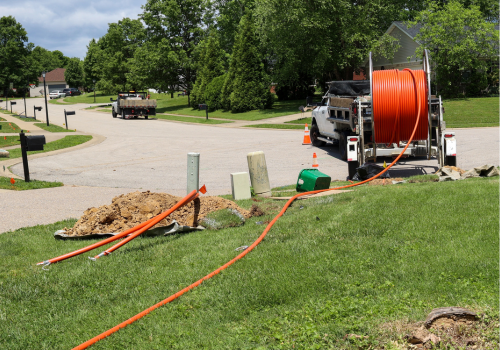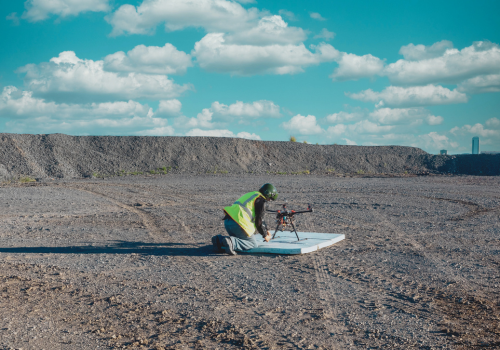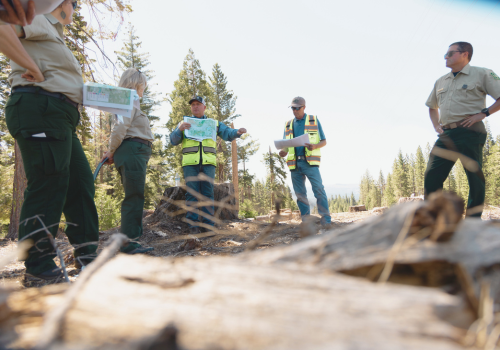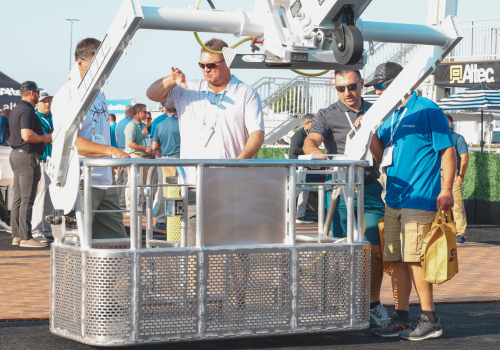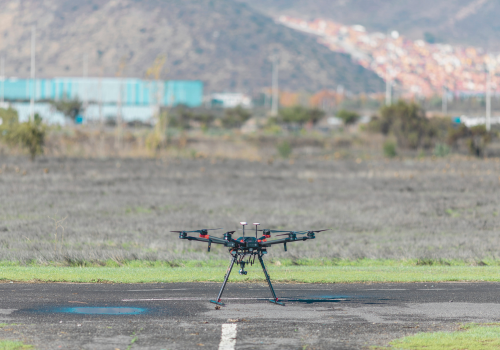Compact machines play an increasingly important role in utility construction, particularly as urbanization grows. According to the U.S. 2020 Census 80% of the U.S. population currently lives in urban areas, up from 64% in 1950. Utility workers in urban environments not only face limited space on jobsites, but high-traffic areas can limit accessibility to projects. Contractors may also face noise and emissions restrictions.
“Compact machines are ideal for working in tight spaces,” says Julie Portillo, Product Marketing Manager for Bobcat Company.
“Lighter operating weights and easier transportation are also particularly valuable to utility contractors,” says Joe Boufford, Product Manager for CASE Construction Equipment’s Skid and Compact Track Loaders. “Some smaller machines may even augment or replace manual labor because now you can get the right equipment in to do the job even in narrow backyards and alleys for example.”
We asked experts from three leading manufacturers to highlight some of the latest trends to watch in compact equipment.
1. Improved operator comfort
A shortage of skilled labor is one of the driving factors in some of the improvements seen in newer models of compact construction equipment. According to Robbie Southerland, Compact Wheel Loader Product Application Specialist at Caterpillar, there’s a focus on operator comfort in the next-generation compact wheel loader cabs. “Sealed and pressurized, seat-mounted controls, heated and ventilated seats, rearview cameras, and operator assist functions like wheel torque control and programmable kickouts offer the best in ease of operation and operator comfort,” says Southerland.
“Comfort is definitely becoming more important to operators,” says Portillo. “Both owner-operators and larger fleets are looking for built-in ergonomics, ample space within the cab, maximized visibility, and modern touch-screen displays.”
“We see contractors struggling for workers and there are aspects of our machines that can help operators be more comfortable and productive,” says Boufford. CASE recently upgraded its skid-steer loader and compact track loader line with enhanced LED lighting, seat and operator station improvements, and technology features.
2. Improved productivity and versatility
“Contractors want to get more out of their machine,” says Portillo. “They need power and versatility, even on smaller jobsites and in tight spaces.” One Bobcat feature that improves productivity is the depth-check system on Bobcat excavators. It accurately measures depth and grade so operators no longer have to leave the cab to complete this task.
“Our customers demand a versatile machine that can perform many different tasks,” says Southerland. “Skid-steer loader couplers, standard and high flow auxiliary hydraulics, high-speed option (25mph), and the ability to upgrade their machine with the many upgrade kits offered give Cat compact wheel loader customers the maximum versatility to give them the most value.”
According to Boufford, versatility and maneuverability are key focuses for CASE skid-steer loader and compact track loader products. EZ-EH controls allow operators to customize the machine speed and sensitivity.
An increasingly wide array of attachments also improves the versatility of compact equipment. According to Ryan Saunders, Senior Product Marketing Specialist for Bobcat, the T86 Compact Track Loader introduced super flow hydraulics designed to work with super flow attachments such as mulchers, cold planers, and snow blowers. “When you run them, you get up to 20% more productivity,” says Saunders.
3. Technology that improves operating skill
CASE’s Bouffard believes 2D and 3D machine control is a small but growing trend in compact machines. “Companies are equipping employees with machines that not only allow operators to be more productive but also help new operators develop their skills,” says Boufford. As contractors gain experience and success with machine control on larger equipment, they are looking to bring those same benefits into their compact equipment. “2D precision has made its way into the compact realm and 3D machine control is starting to gain some traction as well,” adds Boufford. “It allows less-seasoned operators to do higher quality work.” One solution CASE offers is the Leica iCON grade system for push blades for its skid-steers and compact loaders, allowing height or height plus cross-slope control, depending on the configuration. Bobcat compact track loaders can also be equipped with a grader attachment that uses laser systems from Trimble and/or Topcon to increase the accuracy of grading.
A Bobcat feature that improves operator skill is dual-direction bucket positioning. Dual bucket positioning keeps the bucket load at a consistent angle to minimize spilling.
4. Telematics take hold
As compact equipment owners look for efficiency, they are increasingly turning to telematic data available from manufacturers. Caterpillar’s Vision Link allows customers to track metrics such as fuel burn, idle time, and machine uptime across their entire fleet. “Remote machine flash and troubleshooting also allows our dealers to provide faster service without the customer paying for unneeded troubleshooting visits,” says Southerland.
CASE has added telematics capabilities to all models in its SSL and CTL line to ensure that fleet managers can take full advantage of the company’s SiteWatch portal. SiteWatch enables fleet managers to better monitor fleet health and employee productivity, as well as connect with dealer service.
Bobcat initially launched its Machine IQ telematics system in 2019. It allows customers to check the health of their machines and remotely track information that enhances maintenance, security, and performance, all from smart devices or laptops. The company enhanced its telematics system earlier this year with its Remote Engine Disable/Enable feature, which allows customer users to remotely enable or disable their machine’s engine through the Owner Portal or Machine IQ app. This feature helps deter theft and aids in quick machine recovery.
5. A place for electrification
With many utilities seeking to reduce their carbon footprint, electric machines have an appeal for the sector. Bobcat offers the all-Electric T7X Compact Track Loader and has additionally introduced its skid-steer loader counterpart, the S7X, in prototype form. Bobcat also offers two battery-electric compact excavators, the E10e and E19e. “They align well to companies that have sustainability goals,” says Saunders. There are also opportunities to take advantage of federal and state purchase incentives.
“We are seeing that larger utility contractors view EVs as a way to meet their carbon emission goals,” says Boufford. “It isn’t a wholesale replacement of their diesel fleet, but a growing percentage of their new purchases as EVs.” In the compact segment, CASE offers the CX15EV Electric Mini Excavator, SL22EV Electric Small Articulated Loader, CL36EV Electrified Compact Wheel Loader, and CX25EV Electric Mini Excavator.
Buyers can expect an increasing number of electric options in compact machinery to help them meet their sustainability goals.
6. Bring on the sub-compacts
Boufford sees a clear trend in the smaller categories of compact equipment with the introduction of the mini track loader (MTL) and small articulated loaders (SALs). CASE has expanded into this subcompact space with one MTL and nine SAL models.
Bobcat has expanded its line of compact loaders to include 11 compact track loader models, 11 skid-steer loader models, 2 SAL models, 1 MTL model, and 3 compact wheel loader models. It also entered the backhoe loader market in North America this year.
With such a wide variety of compact construction equipment models available, buyers may be challenged to find the right machine for the job. “I have a saying for considering the right products and it’s, “Task- Tool- Machine,” says Caterpillar’s Southerland. “Start with the task, which then dictates the tool needed, which then dictates the machine. The most important thing is providing our customers with the right machine for the application which gives them the best ‘bang for their buck.’”
Subscribe to The Utility Expo monthly newsletter to receive more industry insights like this.
Read Next
Maximizing Equipment Lifespan with Proper Maintenance
Preventative Maintenance Tips for Compact Equipment
Most Versatile Compact Equipment Attachments for Utility Contractors


